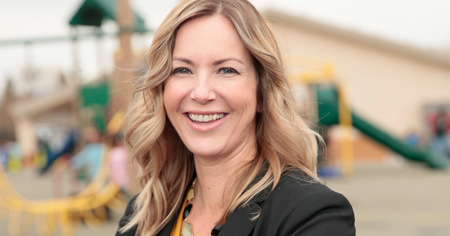It's late afternoon on a cool autumn day at the Don & Sallie Davis Boys & Girls Club on Milwaukee's South Side, and Cedric Gardner is taking charge. Under his direction, a group of young dancers have moved the school desks—usually reserved for journaling and self-reflection—into the center of the dance studio to give it the feeling of a classroom for a seated dance sequence. Think hip-hop meets homeroom.
"Look up when your hands hit the desk," Gardner instructs the group, shutting off the music to demonstrate how those seated should work their arms and upper bodies—it is not easy to dance when you're sitting behind a desk.
The dancers mirror his movements, and then the soundtrack cues again, backing the sequence that will be featured in a Pepsi-sponsored video to promote recycling in schools through an organization called We Are Teachers. "This time, let's see you all smiling, too," Gardner shouts above the clapping beat.
Hands slap down on the desks, shuffling plastic cups as torsos energetically sway. Every face is beaming. A few seconds in, one of the smaller boys pops up on top of the desks and the seated dancers help guide him through to the front. Amid high-fives and hip bumps, others toss up empty plastic water bottles that will eventually get scooped into cardboard recycle bins. The message: Working together we can clean up our classroom and help save the planet.
"I never say no to a performance, because I want the kids to have the experience of performing," says Gardner, whose Davis Dancers, as the students are known, are likely to participate in two dozen or so gigs over the course of a year. "The more they perform, the more confident they become."
Confidence is a big part of what Gardner seeks to impart to his budding dancers at Davis, where together they're part of an unusual effort to see how a youth-serving organization with broad reach into underserved communities can provide high-quality arts to young people. Davis is one of six Boys & Girls Clubs sites across Milwaukee; Green Bay, Wisconsin; and St. Cloud, Minnesota, that are participating in the first phase of the effort, called the Youth Arts Initiative (YAI).
With support from The Wallace Foundation, YAI launched in 2014 to develop a model for offering first-rate instruction in the arts—dance, visual arts, video, music, digital arts and fashion design—to tweens and teens. The initiative calls for sites to adopt, or appropriately adapt, 10 principles of high-quality youth arts programming identified by researchers in a study of exemplary afterschool arts programs—from establishing a culture of high expectations to engaging local stakeholders to equipping dedicated studio spaces with the latest tools and technologies.
Number one on the list of principles is the conviction that instructors should be professional working artists who are willing to carry out the other nine principles while also addressing the day-to-day needs of youth in the club—whether that means teaching a difficult painting technique, mediating a preteen squabble, planning a video shoot or simply being a thoughtful mentor.
"Professional practicing artists hold the key to youth engagement in [out-of-school-time] arts programs," the researchers Denise Montgomery, Peter Rogovin and Nero Persaud write in their study, Something to Say: Success Principles for Afterschool Arts Programs From Urban Youth and Other Experts. "Young people are drawn to the artists' knowledge of technique, their real-world experiences in the arts and their energy and creativity."
Because teaching artists are so pivotal to implementing YAI's efforts, we visited the Boys & Girls Clubs of Greater Milwaukee (BGCGM) last fall to talk to staff members, parents, youth and a couple of artists themselves. They gave insight on the central role that teaching artists play and shared some of the lessons they're learning about how to run effective arts programming in a large organization.
Read more about the visit, in the Knowledge Center.
Courtesy of The Wallace Foundation.
Photography by Claire Holt.




